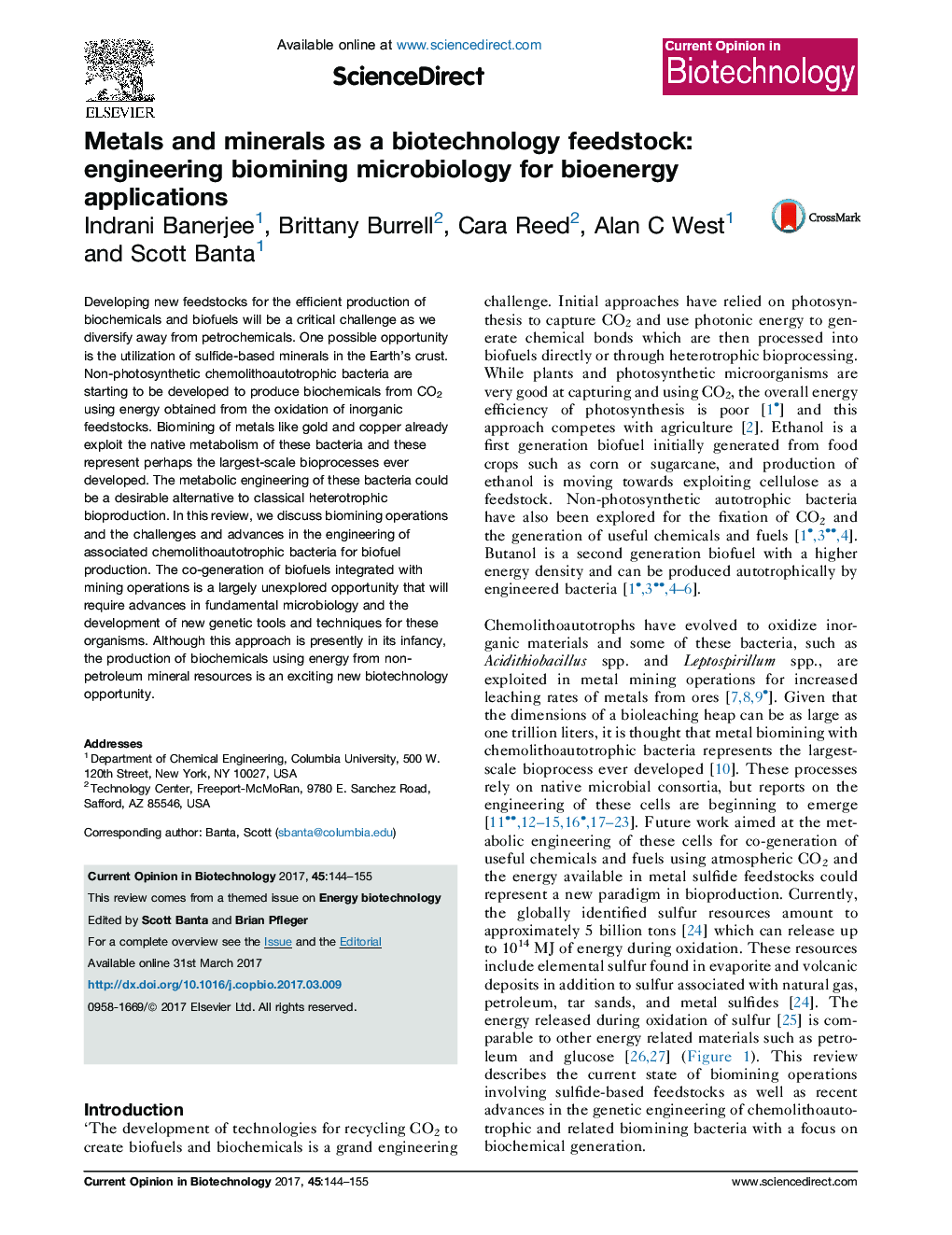| Article ID | Journal | Published Year | Pages | File Type |
|---|---|---|---|---|
| 6451661 | Current Opinion in Biotechnology | 2017 | 12 Pages |
•Chemolithoautotrophic bacteria facilitate large scale metal mining operations.•Metal sulfides in the Earth’s crust are a relatively untapped biotechnology feedstock.•Biomining-associated bacteria are beginning to be engineered to produce biofuels from CO2 using energy from inorganic mineral oxidation.•Cogeneration of biofuels during metal mining could be a new biotechnology platform.
Developing new feedstocks for the efficient production of biochemicals and biofuels will be a critical challenge as we diversify away from petrochemicals. One possible opportunity is the utilization of sulfide-based minerals in the Earth’s crust. Non-photosynthetic chemolithoautotrophic bacteria are starting to be developed to produce biochemicals from CO2 using energy obtained from the oxidation of inorganic feedstocks. Biomining of metals like gold and copper already exploit the native metabolism of these bacteria and these represent perhaps the largest-scale bioprocesses ever developed. The metabolic engineering of these bacteria could be a desirable alternative to classical heterotrophic bioproduction. In this review, we discuss biomining operations and the challenges and advances in the engineering of associated chemolithoautotrophic bacteria for biofuel production. The co-generation of biofuels integrated with mining operations is a largely unexplored opportunity that will require advances in fundamental microbiology and the development of new genetic tools and techniques for these organisms. Although this approach is presently in its infancy, the production of biochemicals using energy from non-petroleum mineral resources is an exciting new biotechnology opportunity.
